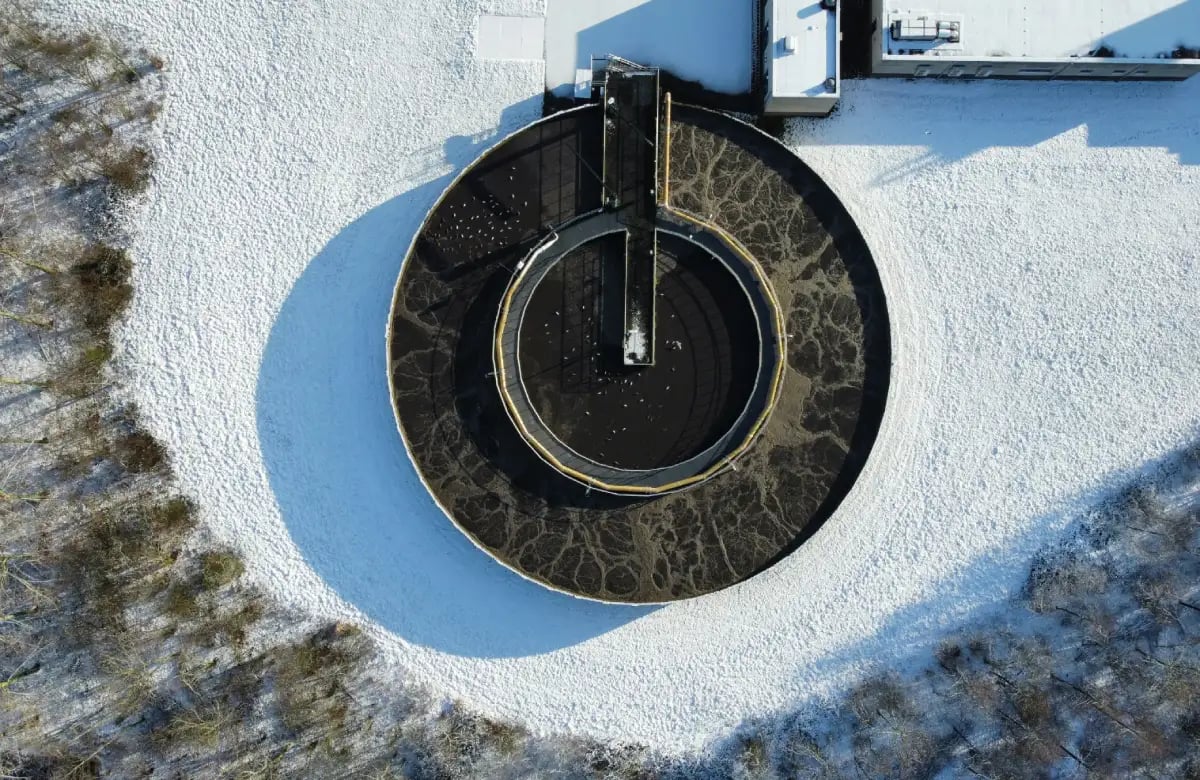Wastewater Microbiome Analysis
Enhance Treatment Efficiency and Safety with Comprehensive Metagenomic Insights
Unlock the potential of metagenomic sequencing to monitor microbial communities, detect emerging threats, and optimize wastewater treatment or renewable gas production processes. Cosmos-Hub empowers you with rapid, no-code analysis, no specialized bioinformatics knowledge required.
Cosmos-Hub Wastewater Microbiome Research Platform
Revolutionizing Wastewater Surveillance
Cosmos-Hub is transforming wastewater microbiome analysis with a platform designed for wastewater treatment plants and research labs aiming to maximize productivity while delivering actionable insights. By combining high-resolution sequencing with AI-powered interpretation, the platform enables detailed study of microbial community dynamics in wastewater samples.
This is critical for monitoring antibiotic resistance genes and pathogenic bacteria, which pose increasing public health risks linked to human gut microbial diversity and overall human health.
For laboratories, the ability to track bacterial communities and resistance genes in complex wastewater streams not only strengthens wastewater surveillance but also highlights risks to human populations, supporting smarter interventions and optimized wastewater treatment processes.
With its intuitive no-code interface and fully integrated workflow—from DNA extraction through to data visualization—Cosmos-Hub removes bioinformatics bottlenecks and accelerates throughput across diverse wastewater surveillance projects.
Why Wastewater Microbiome Analysis Matters
Microbial communities play a crucial role in every stage of wastewater treatment—from organic breakdown and nutrient removal to disinfection and biosolid management. Disruptions in these communities can compromise system performance, increase operational costs, and raise public health risks.
Metagenomic sequencing provides a fast, non-biased approach to track microbial changes, assess treatment effectiveness, and ensure compliance in municipal, industrial, and agricultural wastewater systems.
Example Sample Types for Wastewater Microbiome Studies
- Influent and effluent water at treatment plants
- Biofilms and activated sludge from bioreactors
- Aeration tank samples
- Clarifier and sediment samples
- Tertiary treatment filtration systems
- Monitoring before and after chemical or UV disinfection
- Outbreak detection in municipal wastewater


Relevant Pipelines
-
Kepler™: Host-Agnostic Taxonomic & Functional Profiling
Kepler™ delivers strain-level detection of microbial shifts within hours—enabling wastewater operators to proactively maintain biological balance and reduce operational risks.
Cosmos-Hub offers Kepler™ in combination with a host-agnostic functional pipeline, Functional 2.0, which interrogates shotgun metagenomic and metatranscriptomic data to understand metabolic and biochemical potential by annotating translated reads with numerous functional databases:
- MetaCyc Pathways,
- Enzyme Commissions,
- Pfam,
- CAZy,
- GO Terms.
-
Emu: Long-Read Amplicon Profiling
Emu is a growingly popular tool designed specifically for long-read amplicon data generated by Oxford Nanopore Technologies or Pacific Biosciences instrumentation. The Cosmos-Hub iteration of Emu is built with flexibility in mind, allowing users to analyze 16S, ITS, 18S or full 16S-18S-23S full operon data. Additionally, many databases have been implemented to allow users to tailor their analysis to their sample type and study questions:
- 16S Amplicon: GreenGenes2, SILVA, GreenGenes2, GTDB SSU 220, EMU Default, MIDAS, HOMDB.
- ITS Amplicon: UNITE
- 18S Amplicon: SILVA
- 16S-ITS-23S Full Operon: RRN
-
Short-Read Amplicon Profiling
Our amplicon sequencing workflows provide high-resolution taxonomic profiling of microbial communities using targeted regions—16S rRNA for bacteria and archaea, and ITS for fungi.
- The short-read 16S pipeline utilizes the DADA2 algorithm for denoising and ASV inference, ensuring genus resolution of bacterial taxa. Taxonomy is assigned using the SILVA database, and community-level functional potential via Metacyc Pathways and Enzyme Commissions is inferred with PICRUSt2.
-
The short-read ITS pipeline is optimized for fungal community profiling, leveraging the QIIME framework along with the UNITE database for closed-reference OTU picking. It processes reads through trimming and merging, outputting tables of OTU IDs, frequencies, and relative abundances.

Overcoming Wastewater Microbiome Analysis Lab Challenges
Analyzing wastewater microbiomes is an essential but often complex task for research labs and wastewater treatment plants. Wastewater samples contain highly diverse microbial communities and fluctuating bacterial composition, making accurate detection and interpretation of data a demanding process.
As wastewater based epidemiology becomes increasingly important for monitoring human populations, early pathogen detection, and antimicrobial resistance, labs need tools that can simplify workflows and deliver meaningful results faster. Cosmos-Hub is built to address these pressing challenges, turning complex sequencing data into actionable insights and helping identify potential microbial biomarkers for further analysis.
Key challenges include:
- Complex sample types: Diverse bacterial communities and bacterial composition in wastewater require advanced sequencing and analysis platforms.
- Emerging pathogens: Detecting pathogenic bacteria, including SARS-CoV-2 and antibiotic resistant organisms, is critical to protecting public health.
- Data interpretation: Translating raw sequencing results into useful findings can be resource-intensive without streamlined tools.
- Resistance tracking: Monitoring resistance genes is vital for understanding antibiotic resistance and antimicrobial resistance trends.
- Functional monitoring and prediction: understand the metabolic implications behind wastewater microbiomes using advanced functional gene and pathway profiling.
- Biomarker discovery: Potential microbial biomarkers identified in wastewater offer new opportunities for further analysis and early-warning surveillance.
.webp?width=2000&height=1333&name=Biostatistics%20Photo%20(1).webp)
How Cosmos-Hub Enhances Wastewater Microbial Monitoring
Key benefits include:
Rapid, no-code analysis of raw sequencing data from complex samples
Tracks microbial diversity and abundance across treatment stages
Identifies functional genes linked to nitrification, denitrification, and organic load degradation
Detects pathogens, antimicrobial resistance genes, and environmental risk markers
Ready to Optimize Your Treatment?
Unlock the power of high-resolution microbiome analysis with Cosmos-Hub.
Frequently Asked Questions
-
Can Cosmos-Hub analyze sludge, biofilm, and water samples?
Yes. The platform supports all wastewater sample types and is optimized for mixed microbial communities.
-
How quickly are results available?
Results are typically delivered within 1–3 hours of data upload.
-
Does the platform track treatment efficacy?
Absolutely. You can monitor microbial profiles across influent and effluent to assess system performance.
-
Can I detect emerging pathogens or resistant strains?
Yes. Cosmos-Hub identifies pathogens and AMR genes using a patented biomarker-based engine.
-
Is the platform scalable for long-term monitoring?
Definitely. It supports historical comparisons, trend tracking, and integration with environmental metadata.
